Team Members : Gowri Priya S, Ajay S, Deepak B M, Prakash S T
Project Guide : Dr. M N Shesha Prakash, Dr. H Ananthan
Abstract of the project:
The methodology adopted is to collect the used pet bottles and insert into the panel so that the volume of cement mortar required could be saved. Also the hollowness induced by the bottles could make the elements lighter, thereby economizing on the foundation cost required. It could also lead to lesser destruction during earth-quakes as the mass involved in the entire super structure is relatively less. The testing on these building elements have been carried out and has been found to be of same strength as that of a normal building element (block). When it is used as a roof element, to fill the gap between the cross-beam structure, it not only eliminates the centring, normally used during the laying of roof concrete, but also transmits less heat on either sides of the roof, thereby giving the dwellers, the thermal comfort both during winter and summer seasons.
This project has twin benefits:
- Non-bio-degradable polymeric pet bottles is used to build the wall and roof panels, thereby solid waste management is achieved.
- The panels that are developed can be used for walls, floors and roofs of buildings, thereby achieve economy as well as speed in construction. In addition, thermal and sound insulation could be achieved to certain extent.
Cost of the project: Rs.5,000 /-
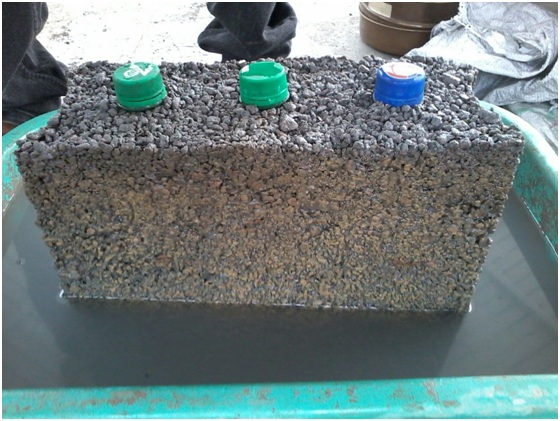
Team Members :Anusha V M, Nikitha R J, Pratheek P Gowda, Abhishek G
Project Guide : Mr. Shiva Kumar N
Abstract of the project:
With the recent schemes initiated towards the development of Rural India by the Indian government, an attempt has been made towards achieving an economical, sustainable and efficient way of improving the soil bearing capacity by using polymeric wastes. An initiative of Indian government, National Institution for Transforming India (NITI Aayog) has been looked upon and a positive contribution in that direction has been attempted.
The work consists of improving the sub-grade strength with the use of polymeric wastes. These wastes can be used for both road pavement and foundation. The current challenges we have in achieving an economic and feasible way of improving bearing capacity of soil has paved the way for the present investigation. Usage of geo-synthetics as reinforcement for earth beds can be seen in developed countries, which is expensive. As an alternative to the above, in a developing country like India, polymeric wastes i.e. cement and rice bags can be effectively utilized as soil reinforcement for foundations. Further, these polymeric wastes, is non-biodegradable and thus the disposal of these hazardous waste effectively without affecting the nature has been achieved.
The test results obtained indicate that, usage of polymeric fabric waste as reinforcement improves the California Bearing Ratio (an indication of bearing capacity of soil). The minimum value of CBR for construction activity is 3%. But, the investigation in the laboratory on cohesive soil with high plasticity gave a CBR of 2.6%.
In order to improve the soil bearing capacity, the polymeric fabric waste provided in single layer, used as reinforced earth bed improved the bearing capacity of soil by 16%. Further, the polymeric fabric waste provided in two layers resulted in improvement in bearing capacity by approximately by 42%.Thus, the usage of polymeric fabric waste as reinforcement results in improvement in the Bearing capacity of the soil.
Cost of the project: Rs.3,000 /-
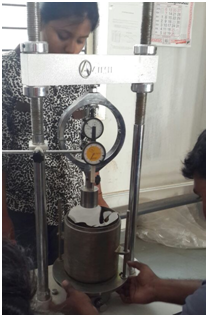
Team Members : Sandesh S, Goverdana Giri H C, Punith N C, Bhanu G Prasad,
Project Guide : Vinay Kumar B M, Asst.Professor
Abstract of the project:
Demolition or maintenance work on such structures results in large amount of concrete rubbles. Recycling concrete wastes will lead to reduction in valuableLandfill space and savings in natural resources. The objective of this study is to investigate the strength of concrete made with recycled concrete coarse aggregate.The variables that are considered in the study include the source of the recycled concrete and target concrete strength. The toughness and soundness test results on the recycled coarse aggregate showed higher percentage loss than natural aggregate, but remained within the acceptable limits. The compressive and splitting tensile strengths of concrete is decreased as the replacement of Recycled aggregates
Cost of the project: Rs.10,000/-
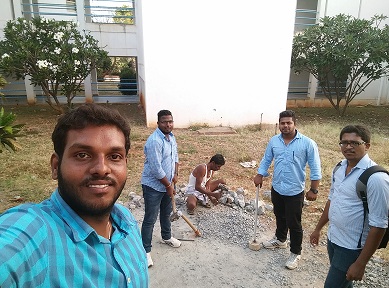
Team Members : SUDARSHAN V, ACHUTH H S, AVINASH K, SUNDAR PRASAD T D
Project Guide : Mr. Adarsh S , Mrs. Anusha M
Abstract of the project:
The department has one project sponsored by KSCST, Bangalore- 37th SERIES OF STUDENT PROJECTS PROGRAMME: 2013-2014. The main objective of the project is to monitor the presence of heavy metals in Kolar Gold Field soil and bioremediation for the same.
Cost of the project: Rs.5000/-
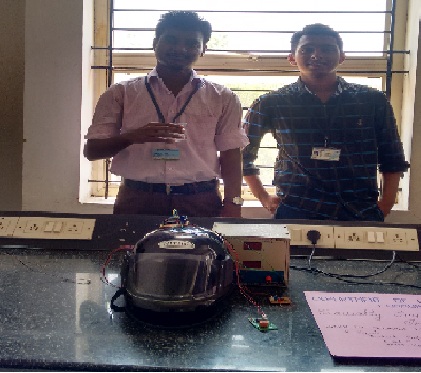
Team Members : Ashritha B S, M.tech 4thSem, CADS
Project Guide : Mr. Arun.L, Assistant Professor, Department of Civil Engineering, VVIET, Mysuru Dr.H S Prasanna Professor, Department of Civil Engineering, NIE, Mysuru
The title of the project "Structural Characteristics of Stone Masonry" has been selected for Seminar for the 38th series of student project programme (2014-2015)
Abstract of the project:
For thousands of years, sand and gravel are used for construction. Today this demand is continuously increasing and has become the major environmental concern in the country, resulting in scarcity of fine aggregate. With the increasing awareness about the environment, ill-effects of sand mining and the ever increasing cost of fine aggregate soil-cement mortars have become suitable alternative for masonry construction.
This work is intended to studies on feasibility of using soil-cement mortar for stone masonry construction and also for a better understanding of masonry behaviour with special reference to two varieties of granite. Also, the study of mix proportion of fine grained soils in cement mortar and its effect on failure characteristics as applied to bond strength and masonry compressive strength are investigated. Locally available stones along with high strength soil mortar will be used. Experimental, analytical and FEM techniques are adopted.
- To determine the characteristics of two varieties of granite.
- To examine the feasibility of using soil cement mortar for stone masonry.
- To study the behaviour of stack bonded stone masonry in shear and compression.
- To describe stress distribution in stone masonry prisms using finite element analysis.
- To suggest suitable type of soil and its volume fraction in the preparation of Soilcement mortar for stone masonry construction.
Cost of the project: Rs.10,000 /-
Team Members : Shwetha C.S, M.tech 4thSem, CADS
Project Guide :Mr. Arun L, Assistant Professor, Department of Civil Engineering, VVIET, Mysuru Dr. H S Prasanna, Professor, Department of Civil Engineering, NIE, Mysuru
The title of the project "Characteristics of High Strength Concrete Block Masonry Using Cement-Soil Mortar" has been selected for Seminar for the 38th series of student project programme (2014-2015)
Abstract of the project:
The study is envisaged to assess the possibility of using soil as a potential replacement material for river sand to make high strength concrete blocks of M40 Grade and suitable mortar. Two types of high strength concrete blocks and mortars are considered. Experimental, theoretical and FE approaches are used to gain insight in to its structural behaviour.
The Main Objective of the project:
- To characterize different types of high strength concrete blocks based on essential properties of engineering interest
- To assess the technical feasibility of using soil cement mortar and cement – M sand mortar for concrete block masonry
- To study the behaviour of stack bonded concrete block masonry in shear and compression.
- To understand the stress distribution and deformation characteristics in concrete block masonry prisms using 2D and 3D finite element analysis.
- Validation of theoretical and FEM results with experimental results
- To suggest suitable type of soil and its volume fraction in the preparation of Soilcement mortar for concrete block masonry construction
Cost of the project: Rs.10,000 /-
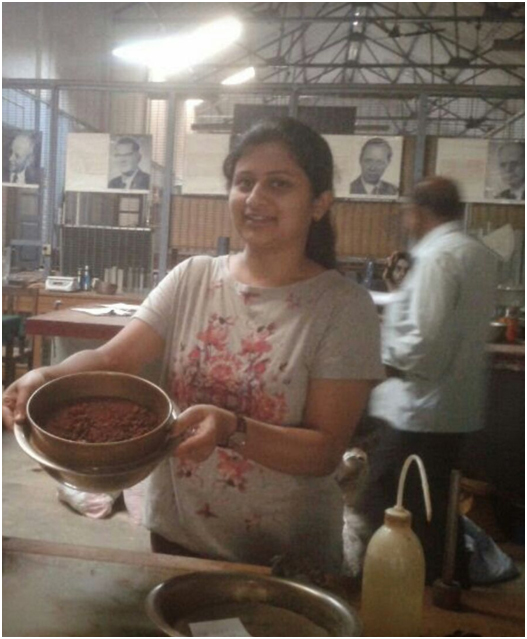
Team Members : MR. KARHTIK H D
Project Guide : Mr. ADARSH S, Ms. DHAVALA S
Projects sponsored by KSCST, Bangalore
Abstract of the project:
The department has one project sponsored by KSCST, Bangalore- 37th SERIES OF STUDENT PROJECTS PROGRAMME: 2013-2014. The main objective of the project is to monitor the presence of heavy metals in Kolar Gold Field soil and bioremediation for the same.
Study Of Behaviour Of Brick Masonry Prisms Under Compression Using Mortars Admixed With Steel-Fibres
Team Members : Akhila T , Anargya K S , Shweta H M , Sneha K S
Project Guide : Mr. Jayanth K and Ms. Jeevitha Department of Civil Engineering, VVIET, Mysuru
Abstract of the project:
Study of the behavior of Brick Masonry units under compression is of interest for many investigators. The proportion of mortar and its thickness influences the strength of masonry units. Further, from the control of crack and its propagation in masonry units, addition of fibres has a positive influence. The presence of steel fibres arrests the cracks and also its propagation.
The present study focuses on study of the behavior of Brick Masonry units under compression for mortars of varying proportion and admixed with steel fibres. Fibre proportions of 1:4 and 1:6 will be considered with mortar thickness of 10 mm. Also, fibre dosage of 0.5% and 1% is considered for the present study.
Cost of the project: Rs.5,000 /-
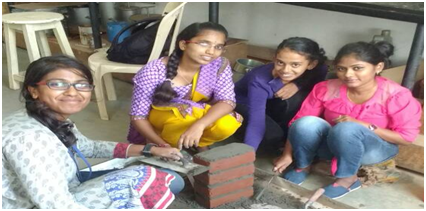
Team Members : Muthahir Musthaba, Mohammud Adil Shah , Mohammud Abdul Mussaeeb, Mohammud Faisal
Project Guide : Mr. Jayanth K and Ms. Jeevitha Department of Civil Engineering, VVIET, Mysuru
Abstract of the project:
Several steps or measures are taken to avoid road accidents. All these steps are together implemented in a vehicle using various methods and technologies. Dim & dip sensors provided along with a buzzer ring. The buzzer sounds as long as the driver is in drowsy condition is present in the particular environment. Thus the ignition is cut off automatically. Lighting system in a vehicle is also used as a signalling system. This system is to provide illumination for the driver for safe driving. At dark the driver might not be able to observe an object when driving on a curved path. An Infrared sensor is used to sense the light coming from the opposite vehicle and switches the beam light of the corresponding vehicle from low to high or high to low. When the driver drives with a high speed, the obstacle that comes in the way cannot be avoided immediately. This can be overcome by a technology which uses it to detect the obstacle opposite to the vehicle. After the detection at the specified range, the driver will be warned about the obstacle.
The study of various experimentations indicate that the waste plastic, when added to hot aggregate will form a fine coat of plastic over the aggregate and such aggregate, when mixed with the binder is found to give higher strength, higher resistance to water and better performance over a period of time. Plastic waste is used as modifier of bitumen to improve some of bitumen properties.
This study presents the proper utilization of plastic waste in hot bitumen and aggregate to enhance the performance of pavement, to protect environment and to provide low cost roads.
The properties of bituminous mix will be studied with and without plastic addition. The polymer coating over the aggregates in the form of plastic results in better binding with bitumen. The polymer coating also results in reduction in voids. The roads can withstand heavy traffic and show better durability.
Cost of implementation of the project is yet to be analysed as the experimentation has been done in the laboratory level and has not been implemented practically. However the waste plastic is an additional ingredient in the bitumen and hence the implementation will improve the solid waste management.
Cost of the project: Rs.8,000 /-
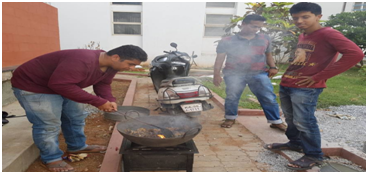
Team Members : Aishwarya M, Darshan Paul , Tejas Pinaki, Roshan
Project Guide : Mr. Adarsh S Department of Civil Engineering, VVIET, Mysuru
Abstract of the project:
Every community produces both liquid and solid wastes. The liquid portion wastewater is essentially the water supply of the community after it has been fouled by a variety of uses. From the standpoint of sources of generation, wastewater may be defined as a combination of the liquid or water carried wastes removed from residences, institutions and commercial and industrial establishments together with such ground water, surface water and storm water as may be present.
If untreated wastewater is allowed to accumulate, the decomposition of the organic materials it contains can lead to the production of large quantities of mal-odorous gases. In addition, untreated wastewater usually contains numerous pathogenic or disease causing micro-organisms that dwell in the human intestinal tract or that may be present in certain industrial wastes. It also contains nutrients, which can stimulate the growth of aquatic plants, and it may contain toxic compounds. For these reasons, the immediate and nuisance free removal of wastewater from its sources of generation, followed by treatment and disposal, is not only desirable but also necessary in an industrialized society.
Vidyavikas institute of Engineering And Technology is located in Alanahalli midway, (12.30400N and 76.71150East, altitude) between Mysore (6kms) and Malavalli (39kms). It was started in year 1997, having a large campus about 65 acres having number of educational units starting, from School to Master Degree. The remaining portion of campus is filled with green patches and lawn.
There will be storage of water in campus during the early summer season itself for water because of decreased ground water level In the convenient scenario, reverse of water idea is suggested by adopting STP for the girl’s hostel which provides water for gardening and other recreational purposes The UGD line of VVIET Girls’ hostel which accommodate nearly 220 students 50 rooms together connected to common manhole through series of chambers.
The sewage sample from the manhole located at the corner of Hostel where the sewage from all the blocks flows into the manhole in a UGD. The sample is collected three times at the peak hours for consecutive four days and it is then analysed for its various characteristics.
Cost of the project: Rs.18 Lakhs
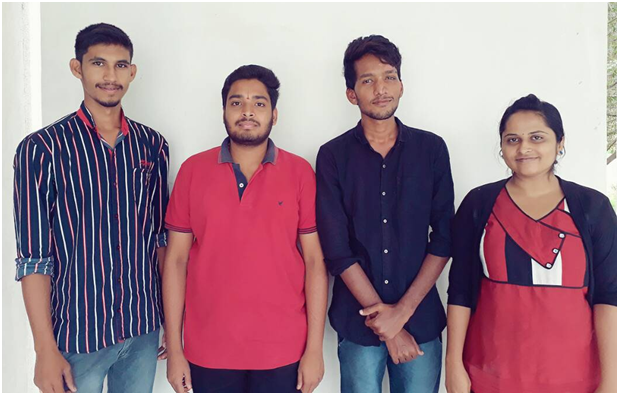
Team Members : Sachin S L , Sachin D , Prakash Ainapur, Sunil P
Project Guide : Mrs. Anusha M Department of Civil Engineering, VVIET, Mysuru
Abstract of the project:
Biodiesel is an alternative to conventional diesel fuel made from renewable resources, such as non-edible vegetable oils. The oil from seeds (e.g., Jatropha, MilletiaPinnattaetc) can be converted to a fuel commonly referred to as "Biodiesel." In this project the seed MilletiaPinnatta is being used to extract the biodiesel. No engine modifications are required to use biodiesel in place of petroleum-based diesel. Biodiesel can be mixed with petroleum-based diesel in any proportion. The use of biodiesel resulted in lower emissions of unburned hydrocarbons, carbon monoxide, and particulate matter. The fuel consumption in the world particularly in developing countries has been growing at alarming rate. Petroleum prices approaching record highs and they will deplete within few decades, it is clear that more can be done to utilize domestic non-edible oils while enhancing our energy security. The economic benefits include support to the agriculture sector, tremendous employment opportunities in plantation and processing.
Cost of the project: The developed fuel is an additional ingredient to diesel to be mixed in a fixed proportion. However, the cost of developing is Rs. 39 per litre as against Rs. 59/- of diesel.
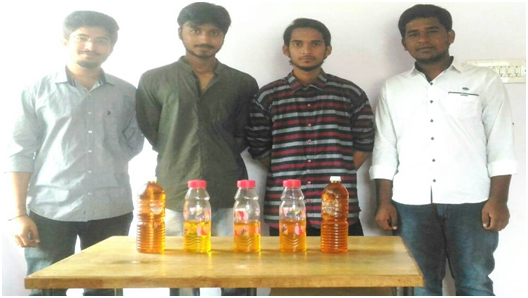
Take a short tour in our campus